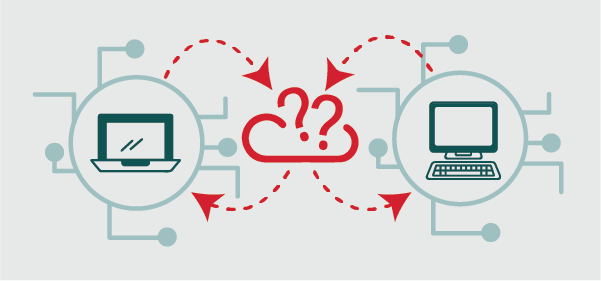How to Solve the Private File Sharing Dilemma
If you work with computers there are two things you can be certain of: You will at some point have to share files, and you should be concerned about data privacy and other cyber-related risks. Finding ways to enable private file sharing is literally a holy grail for the technology industry.
Based on how many large and small media outlets covered Mozilla’s recent private file sharing launch, it seemed almost revolutionary that there’s now a service allowing users to share protected, encrypted files through a browser, with a link that automatically expires to keep shared files private.
For the record, it’s not. There are a few companies out there that provide this type of service. The differentiator is likely the ease with which one could use Mozilla to send large files – though there’s a cap at 2.5 GB – and the fact that it’s secure. The launch made news because it highlighted a solution to a common pain point: how to enable private file sharing.
Consider how important data privacy is these days. Most of us don’t have much of it, and you or someone you know of likely has had your private information breached in some way. Sometimes it seems like there’s a new story every day of hackers playing fast and loose with big database holding companies like Equifax and Uber. What can one do?
In particular, technologists are struggling to figure out how to make it easy and safe to share large files for knowledge workers and creatives. These computer-driven groups are habitually hemmed up by email file size and type restrictions, firewalls and other regulations and work-related scenarios.
The cloud offered a great solution, with the added bonus of better enabling collaboration at an enterprise level. In fact, the current operations model for private file sharing revolves almost entirely around cloud storage. But the cloud has issues.
It definitely works, but it’s like the Free Software Foundation Europe said, “There is no cloud, just other people’s computers.” In reality, the cloud is less an ephemeral construct and more a set of servers that store data off site. That means sensitive – potentially ruinous if it falls into the wrong hands – data is out there, somewhere, outside of the sender and the recipient’s control. Hacks and security breaches can still occur. In that way the cloud is actually the antithesis of secure private file sharing.
So, ultimately the goal is not necessarily to prevent hacks and breaches, it’s figuring out how to set up private file sharing so that those things aren’t even an issue.
3 Behaviors that Hurt Private File Sharing
There are some very common behaviors that contribute to private file sharing troubles. These range from inadvertent mishaps to deliberate sabotage and collusion. Here’s a short list:
- Curiosity: People who exhibit this behavior didn’t get or absorb the memo that you’re not supposed to click on every link. They can’t keep themselves from clicking no matter how dubious the surrounding content. Of course, some people are simply misled. Phishing has gotten increasingly sophisticated as the bad guys upgrade their production value. In many cases, it’s almost impossible to tell the real from the fake. But that one seemingly innocent click can open a computer up like a cookie jar, enabling anyone to reach in and take out what they like.
- Carelessness: Many of us work off site these days. Starbucks, libraries, anywhere there’s a free wifi connection is a place we could potentially post up with our laptops and work. But wifi networks are rarely secure, so naturally they’re vulnerable. Hackers can access files, private information and whatever else they want as long as someone is logged on, and sometimes afterwards too. So, the best practice is not to access certain things via unsecure networks, but it can easily happen in the normal course of work.
- Disgruntled: That’s a mild descriptor for a range of people who deliberately and willfully steal intellectual property. It’s not unheard of for gainfully employed talent to create a nice side hustle sharing private data for profit. This behavior could be motivated by anything from cash to angst, but the result is the same: wasted time, money and resources trying to recover or fix whatever unauthorized data issue they’ve created.
The solution is to make private file sharing, if not idiot proof, then something close to it.
Binfer Makes Private File Sharing Quick and Easy
Binfer, a direct device-to-device, secure file sharing software company, has solve the major problems related to private file sharing: Eliminated the possibility that data will be leaked or end up in the wrong recipient’s hands, and made it quick and easy to share large files of any type or size.

Private file sharing happens with complete end-to-end AES 256-bit encryption without using the cloud, or any other server. Binfer never stores any data, nor does it sell any. It simply enables a user to send or receive files directly from another party and ensures that shared data remains private and secure.
File sharing, web drop, file sync, private communication, private cloud, Binfer offers a solution to cure almost any private file sharing ill. Again, there are no file size or file type restrictions. Whether a videographer is moving large video files in access of 50 GB, a network administrator wants to transfer a database from one digital place to another, or an HR professional in a maritime organization is sharing information between vessels in the middle of the ocean and HQ miles away on land, it can happen as quickly and easily as a drag and drop or clicking a link.
Nice, right? It’s private file sharing made easy with an added bonus – it’s affordable.
To learn more about how Binfer conquered the private file sharing dilemma, download and try our large file sharing product.
